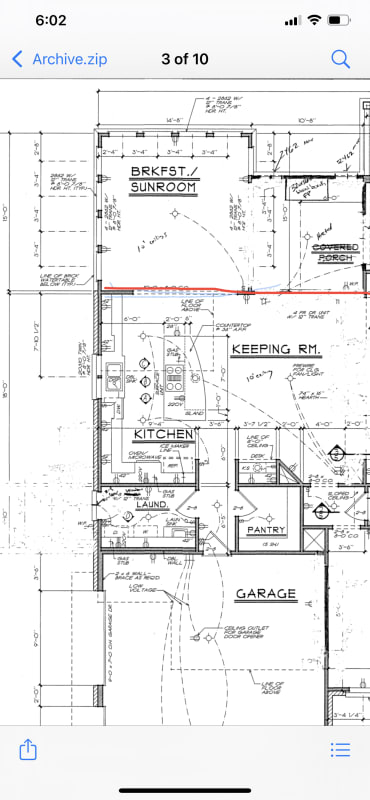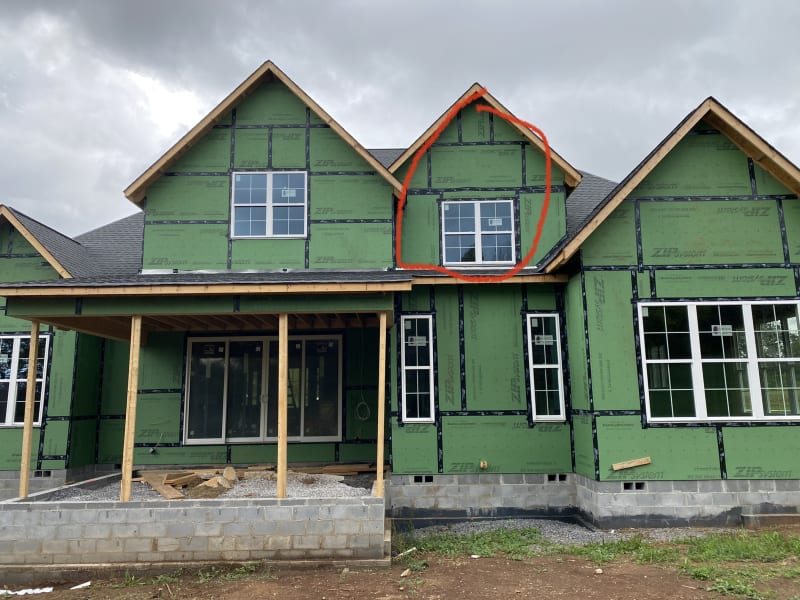Bammer25
Structural
- Mar 22, 2018
- 154
Hi there. Structural Pe here building a home. My contractor is super nervous about this situation. I am not. Wondering if I am missing something. I have attached a first floor plan view. In red is a triple 24” LVLi designed to span 25’ and eliminate a T cased opening between breakfast sunroom and covered porch. We actually finished the covered itch as heated space. Everything is framed and completely open.
It’s time for brick and we want brick over that beam where a gable is. I have attached an exterior picture with the gable circled. Contractor is super worried about the brick loading. That gable wall is directly over the triple LVL.
There are 2 issues. Loading is one. I included brick weight in my design. I am not concerned. The other is the lintel usually being cast into the adjacent brick course mortar joint. That is not possible here since the roof comes down. Is simply bolting to the exterior wall studs going to work? Or do I just go with hardi/shake? I calculated about 3000 total pounds of brick there over 11’


It’s time for brick and we want brick over that beam where a gable is. I have attached an exterior picture with the gable circled. Contractor is super worried about the brick loading. That gable wall is directly over the triple LVL.
There are 2 issues. Loading is one. I included brick weight in my design. I am not concerned. The other is the lintel usually being cast into the adjacent brick course mortar joint. That is not possible here since the roof comes down. Is simply bolting to the exterior wall studs going to work? Or do I just go with hardi/shake? I calculated about 3000 total pounds of brick there over 11’




